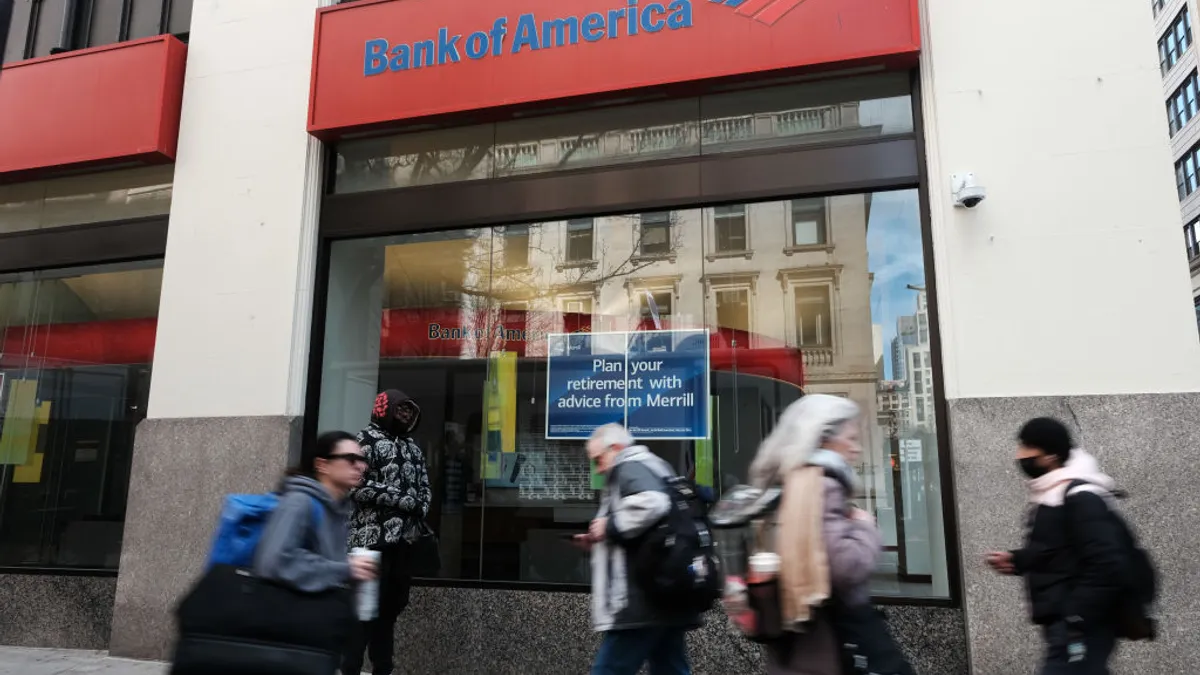Calling out the “frenzy of regulatory reform activity” in the banking industry over the past year, Federal Reserve Governor Michelle Bowman on Friday expressed concern that regulators may be distracting bank management from core financial risks.
The Basel III capital requirements proposal, new long-term debt requirements and changes to the regulatory approval of merger and acquisition activity are among the slew of pending proposals poised to significantly affect the industry, Bowman noted during a speech at a Pennsylvania Bankers Association convention. Some of those proposed reforms have been met not just with criticism from the industry, but also resistance in the form of ad campaigns and legal challenges, she added.
“Reasonable minds can disagree on the appropriate path forward for bank regulatory policy, but the current period of regulatory reform feels more contentious than in the past,” Bowman said Friday. In a separate speech Monday, Michael Barr, the Fed’s vice chair for supervision, appeared to defend regulators’ reform efforts, calling capital, liquidity and long-term debt requirements ‘three legs of the stool.’” Regulators are considering “targeted adjustments” to current liquidity requirements, he said.
Bowman and Fed Governor Christopher Waller, both Republicans, were the two Fed board members who voted against the capital requirements proposal issued last July. Fed officials have said in recent months they expect to make broad and material changes to the proposal, which has faced intense industry pushback.
As regulators contemplate changes, Bowman urged the regional bankers group to provide their input on proposals, noting that comments and data from those in the industry allow policymakers to make more informed decisions during the rulemaking process.
“If there is a desire to influence change, stakeholders must engage and provide input during this process,” she told the group.
Bowman covered a wide swath of pressing matters in her speech Friday.
Regulatory reform prioritization
“A lack of prioritization in our approach risks losing focus on making substantively responsive adjustments and reforms.”
Regulators’ frenzied pace of reform activity over the past 12 months may lead to questions over whether reforms are being pursued in a prioritized way, Bowman said. Many proposals don’t seem to be “targeted to identified shortcomings or deficiencies in the existing regulatory framework,” she said.
She also expressed concern that regulators may be losing sight of the core financial risks when pursuing “tangential” issues.
“Focusing on risks that pose fewer safety and soundness concerns increases the risk that regulators miss other more foundational and pressing areas that require more immediate attention,” she said. “Our recent actions suggest this could be the case, and that we have taken steps that could distract bank management from focusing on important and key risks.”
She pointed to the recent climate scenario analysis the central bank conducted last year with the nation’s six largest banks as something that may only further distract bank management and supervisors.
“The lessons learned from supervisory failures during the bank stress last spring clearly illustrate that bank examiners and bank management should focus on core issues, like credit risk, interest rate risk, and liquidity risk,” she asserted.
Mergers and acquisitions
“Some contemplated regulatory reform efforts will likely make the M&A application process slower and less efficient.”
Bowman appeared to be pointing to efforts by both the Office of the Comptroller of the Currency and the Federal Deposit Insurance Corp. to enhance scrutiny of some proposed bank mergers. Each agency has proposed changes this year to its merger review process.
M&A is a crucial component of a healthy banking system, Bowman asserted, and regulators should be sure to consider whether their proposed changes have “the potential to damage the long-term viability of the banking system.”
As regulatory agencies have directed their attention at an array of issues, timely action on proposed mergers appears lower on the priority list, she lamented.
“While banks are mindful of and do plan for integration, I am concerned that increased upfront requirements may lead to additional delays in processing timelines,” she said. “I think we have room to do better when it comes to timely regulatory action, while maintaining a rigorous review of applications.”
Bowman tried to pour water on the argument that the lack of merger application denials indicates regulators aren’t seriously reviewing and pressure testing proposals “and have effectively become a rubber stamp.”
She noted a “significant portion” of bank M&A applications have been withdrawn, and processing timelines don’t seem consistent with a “rubber stamp” process, she said.
“One would expect to see different patterns emerging if regulators were truly acting as a ‘rubber stamp’ for banking applications,” she said.
Third-party risk guide
“I have yet to be convinced that the guide will effectively reduce the burden on smaller banks to comply with our third-party risk management guidance.”
Bowman was referring to the third-party risk guide for community banks issued jointly by the Fed, the FDIC and OCC this month. It aims to be a resource for community banks as they develop and implement third-party risk management programs and policies.
Despite that position, Bowman said she’s “hopeful” that the guide will be helpful to community banks.
She encouraged bankers to offer feedback on the guide, “including on the clarity and transparency of supervisory expectations for community banks in their management of third-party risk.”





















